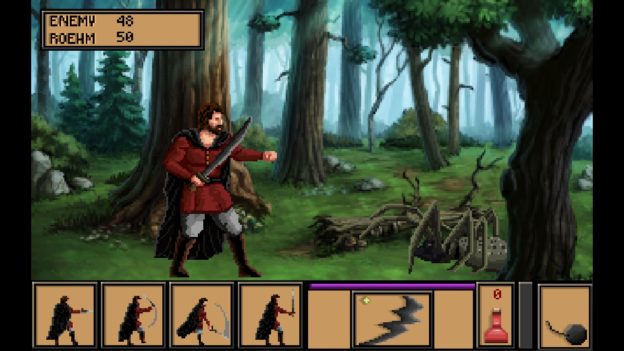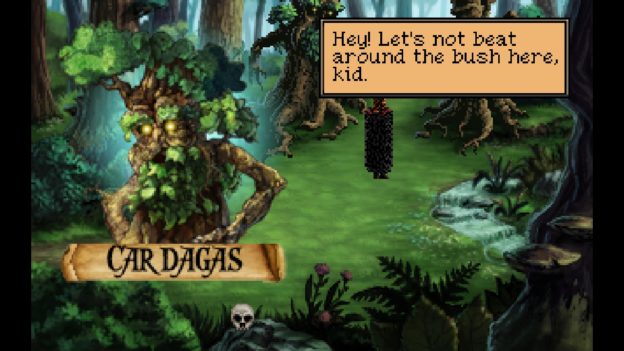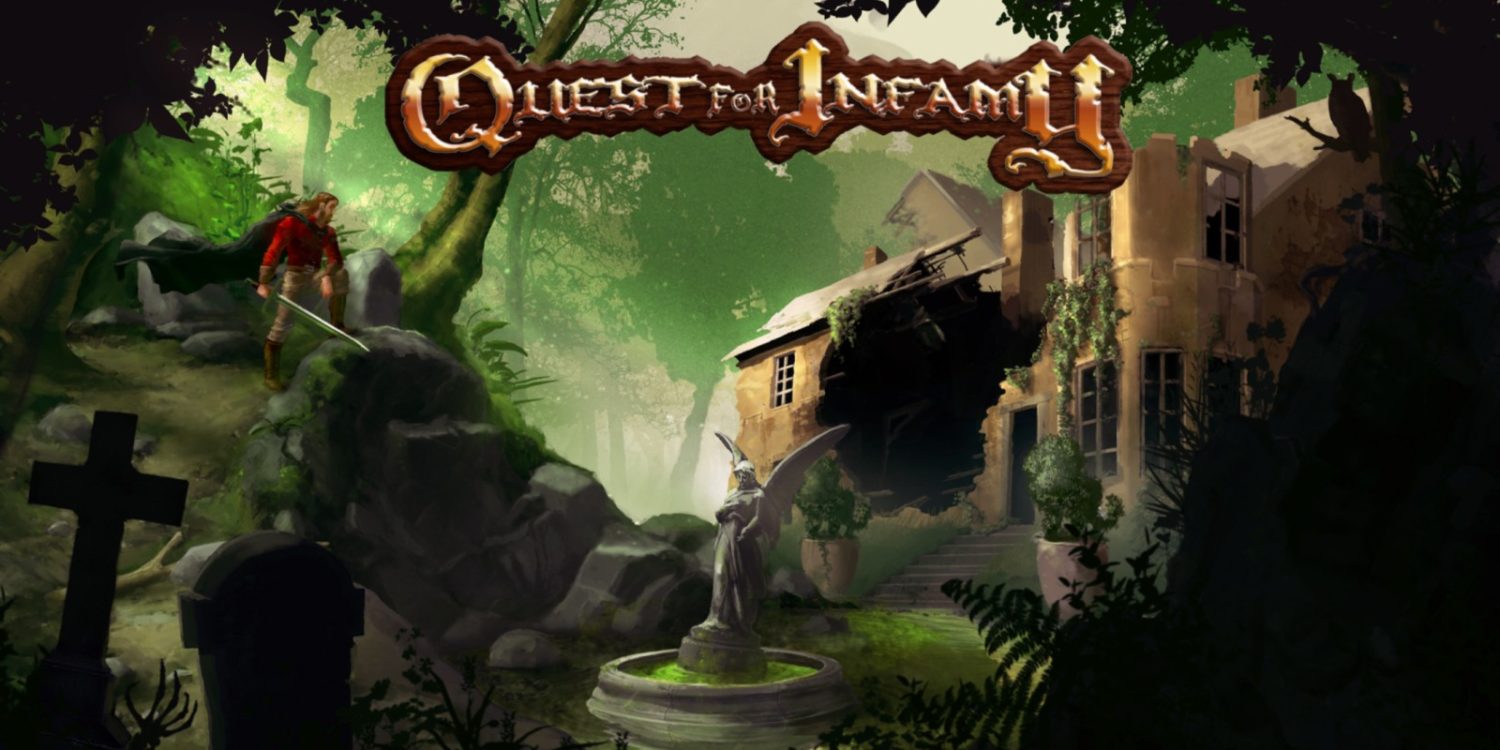Published by the ever-consistent Ratalaika Games, Quest for Infamy is a love letter to the past’s classic point-and-click, fantasy-adventure games. Initially released in 2014 on PC, Quest for Infamy has made its way to the Nintendo Switch and is definitely worth checking out – especially if you are a fan of those classic fantasy-adventure RPGs from way back when.
Within Quest for Infamy, you play as Roehm, a drifter who has arrived in the town of Volksville to start fresh. After getting to know the town and the wacky characters that call it home, you head to the town square to view a beheading (nice). It is here that your adventure begins. Early on, you’ll have the choice of three classes; these cannot be changed without restarting, so pick wisely! These don’t just affect your stats and abilities, they also impact the storylines and adventures you go on. This is a modern update to the classic formula that Quest for Infamy is paying homage to, adding tons of replayability.
Before even starting the game, you have the option to read through an instruction booklet and a quickstart walkthrough to help you early on. I took a read of the quickstart walkthrough and I am so happy I did; otherwise, I 100% would have spent hours in that prologue. There is no real guidance or map to refer to in Quest for Infamy – you really have to just remember where things and people are and, more importantly, what you need to do next.

If only there was a quickstart walkthrough for the remainder of Quest for Infamy, as I got lost plenty! I’ll admit, this was on me. I am not the target audience for this game, and I imagine veterans of this genre will have no problems playing through it.
You’ll spend most of your time in Quest for Infamy making full use of the point-and-click mechanics. However, there is an additional layer to this game: the combat. The combat is incredibly basic. When you encounter an enemy, animal or monster, you will enter a turn-based battle system. You have an action tray that sits at the base of the screen, and you can choose from a set of actions depending on the weapon you have. For example, with a sword, you’ll have the option to stab, slash, swipe or block. It’s very straightforward, and the battles aren’t tricky, but a nice break from the point-and-click-ness.
Back to the point-and-click-ness, if you’ve played one such title, you’ve essentially played them all when it comes to how they work. With Quest for Infamy, you use the L and R buttons for cycling through actions that you can do with your cursor. For example, your cursor will become an eye if you want to look at something, a hand for touching or action, a speech bubble for speaking, etc. Moving your cursor to the top of the screen opens your inventory and some further actions. I did not realise this was there until a good hour into playing. One of my gripes was going to be that you cannot run at all in this game, which harms the pacing – especially when lost – but within this drop-down tray, there is a run button! And boy was that button abused from then on.

I’m surprised it has taken me this long to discuss my favorite part of Quest for Infamy – the dialogue and characters. This is a hilarious game and the main reason (for me) that I kept playing. There are many games where NPCs are overlooked and just skipped because they offer no value. However, within Quest for Infamy, every character is full of life, has an opinion, is hilarious, unique, and fully voice acted. No, the voice acting isn’t amazing, but the fact that it’s a little shoddy makes this much better. The humour is incredibly dark, lewd, and crude at times, which is right up my street, but I understand it won’t be for everyone. If you are a fan of irreverent humour, you’ll eat the dialogue up.
Shout out to Gwen and Owen, the owners of the meat emporium – I mean, the butcher shop in town. Their love/hate marriage is iconic.
Each character that can be spoken to also has a unique design and character sprite. These are creepily realistic – especially given that it’s all created with pixels. All characters look, sound, and feel unique from one another. I tip my hat to Steven “Blackthorne” Alexander and the rest of the For Infamy team.

The lack of assistance with the game most definitely harmed my experience with Quest for Infamy. There is a hints option in the pause menu; however, it is rather vague. Again, my brain isn’t built for these games, so imagine those who are fans of this genre and style of game will have no issues and won’t mind the time it can take to figure out where to go, who to speak to and what to do.
The quests too are very threadbare and usually require you to: talk to someone, travel somewhere (if you haven’t been to where you need to go, good luck!), and then either talk some more or engage in the straightforward – and easy – combat system. Then return to who you spoke with and then on to the next one!
Visually, Quest for Infamy is incredibly charming. The old-school, highly detailed pixel artwork is excellent and very fitting for this game. There were times when the pixel working didn’t look good, and some words weren’t easy to read, but these were few and far between. In handheld, this all looked much cleaner. You can also use the touch screen when playing handheld, which works very well. More games should be utilising this feature where possible!
Review: Quest for Infamy (Nintendo Switch)
Good
Quest for Infamy is an excellent outing for fans of those old-school, point-and-click fantasy games of yesteryear. It’s packed full of missions, side-quests, and things to discover, albeit a little bare. The writing and characters breathe so much life and comedy into this game that you can’t help but have a merry old time with Mister Roehm.


